Palace of Nestor
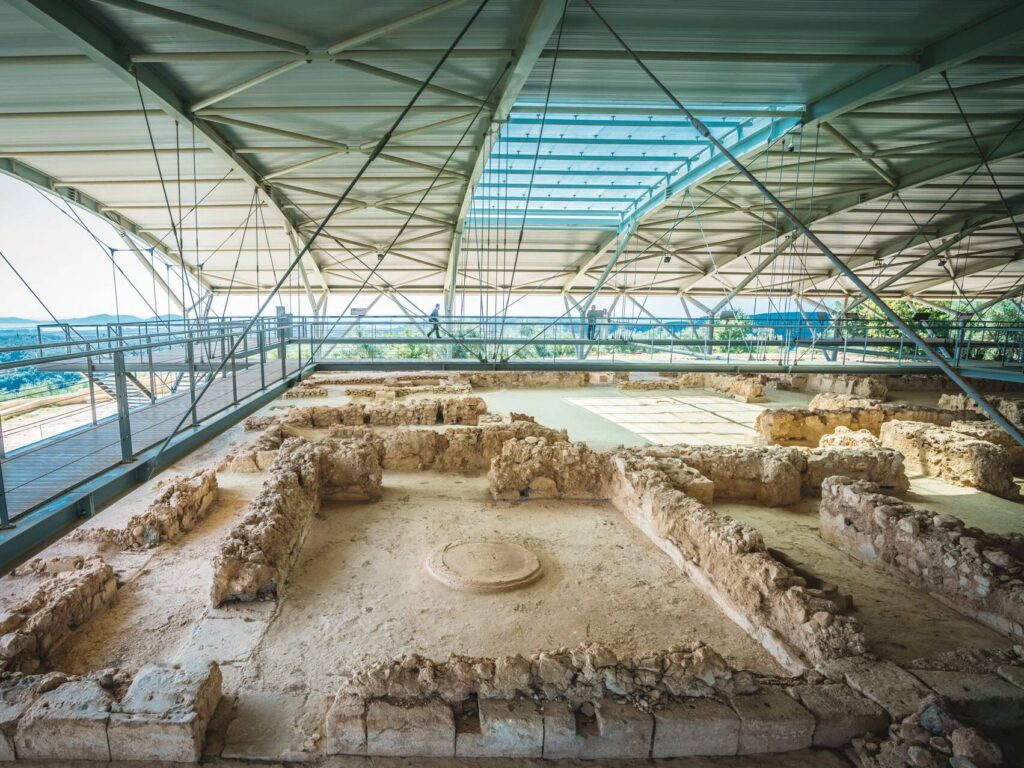
Just 14 kilometers from Pylos, in the village of Chora you will find the most well-preserved Mycenaean palace! The palace was built in the 13th century BC. from King Nestor himself, the son of Niles. According to the Homeric epics, Nestor led Pylos to the Trojan War with 90 ships and is presented by Homer as a wise old man, whose opinion the Achaeans always respected. *Extra info: Nestor’s Palace was so famous from the past that the first searches for its location were already started in 1888 by Heinrich Schliemann, who, however, failed to locate it. In 1939, however, Konstantinos Kourouniotis, not only did intensive excavations to locate it, he did not stop until he succeeded. From the excavations of Constantine, more than a thousand tablets from the archive of Nestor’s palace came to light, with texts in Linear B, which were deciphered in 1952 by Michael Ventris, an architect, and John Chadwick, a linguist. Telephones 2763031437 (Original site) 2721063100 (EFA Messinia) Ticket Prices Whole: €6 Reduced: €3 Single Ticket: €15 – Duration 3 days, and valid for: Nestor’s Palace, Archaeological Museum of Messinia, Archaeological Museum of Chora, Kalamata Castle, Methoni Castle, Pylos Castle (Niokastro), Troupakidon – Mourtzinon Fortress Complex. Opening Hours Daily: 08:00 – 20:00 Tuesday: CLOSED
Andromonaster

In the settlement of Petralona, amidst a wonderful natural landscape, Andromonastir dominates. A monastery with wonderful architecture, which was founded in the late 12th or early 13th century and contributed significantly to the revolution of 1821 as it possessed a large property. Unfortunately, it was damaged by Ibrahim’s raids, but inside the temple there are preserved frescoes from the 13th and 17th centuries, as well as parts of the Byzantine sculptured iconostasis and marble floor tiles. Before your visit and for any question regarding the opening hours, please contact: +30 27240 51201 (Arch. Site & Museum of Ancient Messina) Telephone 27240 51201 (Arch. Site & Museum of Ancient Messina) Opening Hours Monday – Friday: 08:30 – 14:30 Weekend and Public Holidays: 08:30 – 16:00 Tuesday: CLOSED
Archaeological Museum of Messinia
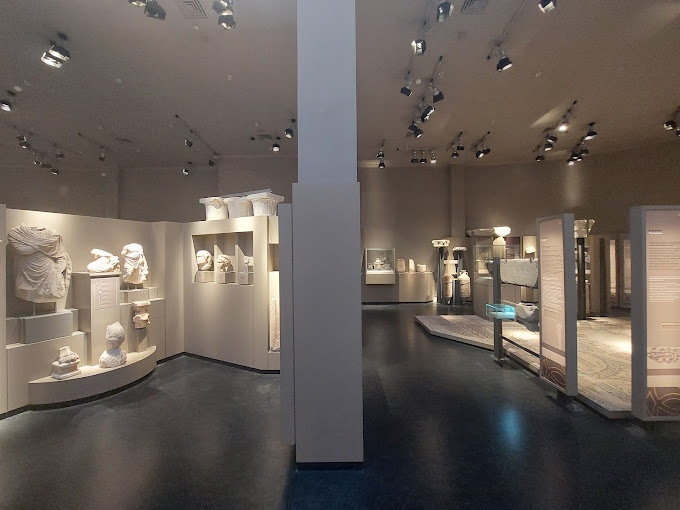
In the heart of the historical center of Kalamata, dominates one of the gems of all of Messinia, the Archaeological Museum of Messinia which is truly an unforgettable experience for lovers of history and Antiquity. Visitors, essentially to cross the museum and watch its exhibits, follow a central “artery”, reminiscent of the flow of the Pamisos River that runs through a large part of Messinia. Following the old geographical division of the prefecture into four provinces, Kalamata, Messini, Pylia and Trifylia, the exhibition is developed in corresponding large geographical units, within which the most important archaeological sites with representative findings from excavations and research are included. For a more comprehensive historical understanding, ten thematic sections are marked with visual material, based on the space in which various important events took place. The ten thematic sections are as follows: “The Villeardouins and Messinia” “Mani and the Despotate of Moreos” “Thuria a quaint town” “Outside Mani, on the Messinia-Lakonia border” “Holy Nicon the Repentant and Messinia” “The capital of the independent Messinian state in the foothills of Ithomi” “The Venetian Gate (1206-1500)” “A Mycenaean center in the Messinian Gulf” “Nestor’s Palace Territory” “The Mycenaeans of Triphylia” The archaeological museum of Messinia is definitely something you should not miss during your visit to Kalamata. Telephones +30 2721083485 +30 2721063100 (EFA Messinia) Ticket Prices Whole: €4 Reduced: €2 Single Ticket: €15 – Duration 3 days, and valid for: Nestor’s Palace, Archaeological Museum of Messinia, Archaeological Museum of Chora, Kalamata Castle, Methoni Castle, Pylos Castle (Niokastro), Troupakidon – Mourtzinon Fortress Complex. Opening Hours Daily: 08:00 – 20:00 Tuesday: 12:30 – 20:00
Archaeological Museum of Pylos
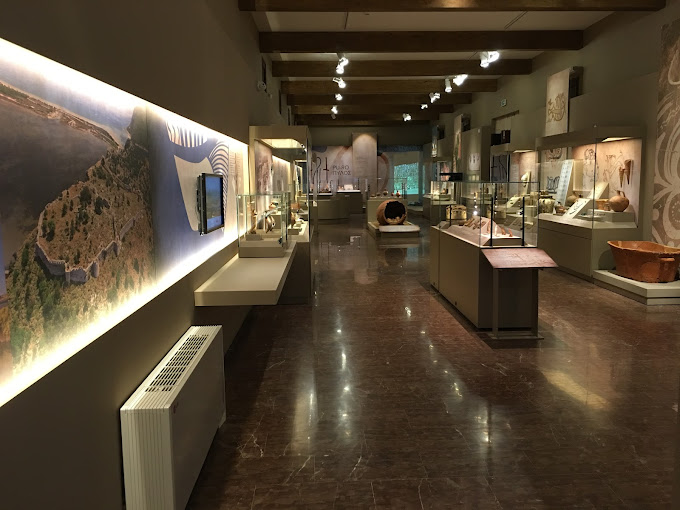
Inside Niokastro, the castle of Pylos, you will find another archaeological gem of the area, the Archaeological Museum of Pylos. There, you will have the opportunity to discover excavation findings from all over the area of Pylea, from the Neolithic era to the Roman times, gifts found in Mycenaean vaulted tombs in the area, vases, jewelry, arrowheads and reliefs! Telephones +30 2723 022955 Ticket Prices General Admission: €3 Opening Hours Weekdays: 08:00 – 15:30 Weekend: 08:00 – 15:30 Tuesday: CLOSED
Archaeological site of Peristeria
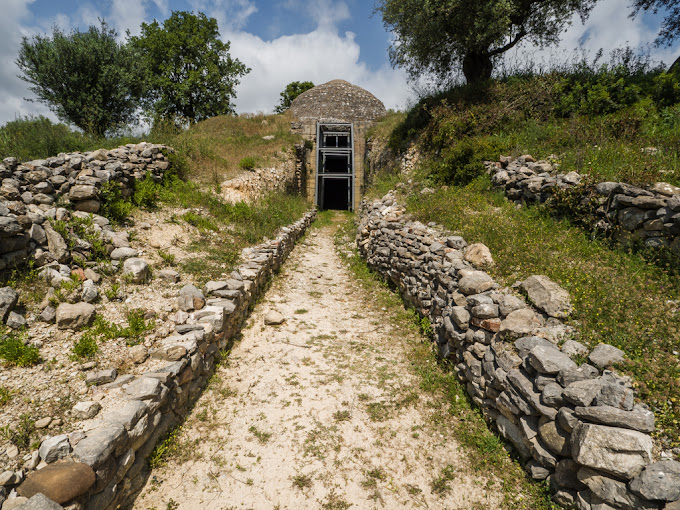
8 kilometers from Kyparissia, you will find a natural fortress, the Archaeological site of Peristeria, which is considered one of the most important findings of the Mycenaean world. The most important ancient findings that have been uncovered are three vaulted tombs within the archaeological site, a vaulted tomb to the south of the hill, part of the Palace and several residences. A significant number of objects, such as gold jewelry and items of daily use, were found in all of them and are exhibited in the Archaeological Museum of Chora. Another reason why the findings of the area are so valuable is the fact that the largest vaulted tomb may even belong to the legendary king Nestor, of ancient Pylos. The tomb is preserved in very good condition, while the acoustics inside it are impressive. Telephone +30 2721063100 (EFA Messinia) Ticket Prices Whole: €3 Reduced: €2 Single Ticket: €15 – Duration 3 days, and valid for: Nestor’s Palace, Archaeological Museum of Messinia, Archaeological Museum of Chora, Kalamata Castle, Methoni Castle, Pylos Castle (Niokastro), Troupakidon – Mourtzinon Fortress Complex. Opening Hours Daily: 08:30 – 15:30 Tuesday: CLOSED
Church of Agioi Theodoros

In the village of Kampos Avias, you will find the Byzantine Church of Agioi Theodoros. A magnificent building of the 12th century AD. which is famous for its many and special frescoes, which date back to after 1760. Their main theme is torturing sinners! Of particular importance is the icon of Agios Georgios, embroidered on silk fabric, which is handmade in 1908. Opening Hours The Church can be visited on all days of the week.
Olive oil mill of G. Skarpalezou
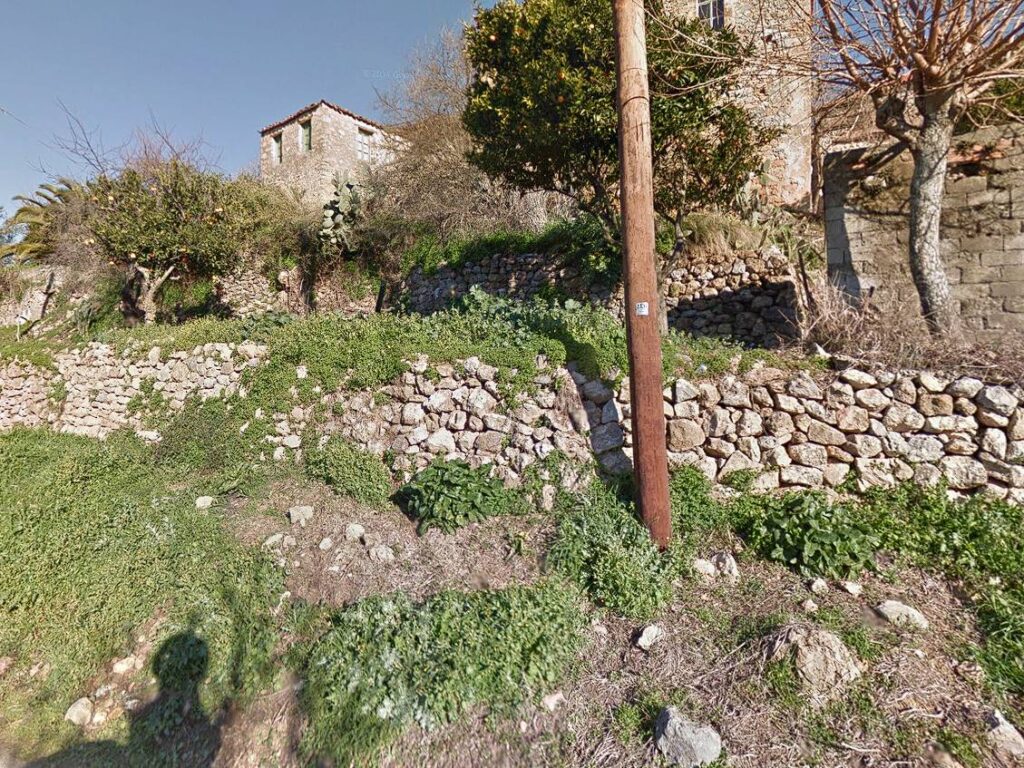
In the Malta settlement of Stavropigiu you will find the Skarpalezou olive mill, which is probably the only traditional olive mill in operation in Greece where the processing of the olive fruit is done with millstones-stones! It has been operating since the Turkish occupation, since 1765. There, the first bey of Mani, Tzanetos Koutifaris, extracted his oil wherever the tax collector of the Turks, Mavrikos, came from the Tower of the adjacent hill to collect the “Tithe tax”, weighing the products with the scale that exists even today.
Saint Peter’s Church
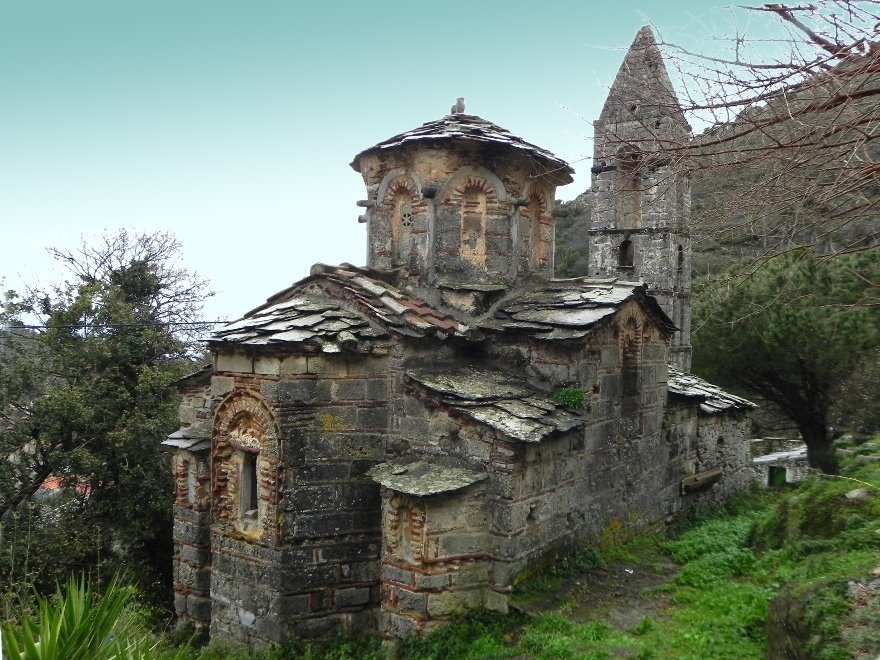
In one of the villages with the tastiest taverns, Kastania, you will find a small cruciform church from the 12th century, the Holy Church of Agios Petros. One of the reasons that make the Holy Church of Saint Peter, one of the most important monuments of the region, is the painted, rectangular, relief, marble frame of the door of the Church, which is crowned by a marble slab.s This plaque depicts a deer, between two birds, being torn apart by a griffin, a mythical monster with the body of a lion, the head and wings of an eagle. Opening Hours The church can be visited on all days of the week from morning to sunset.
Fortified complex of Troupakidon – Mourtzinos
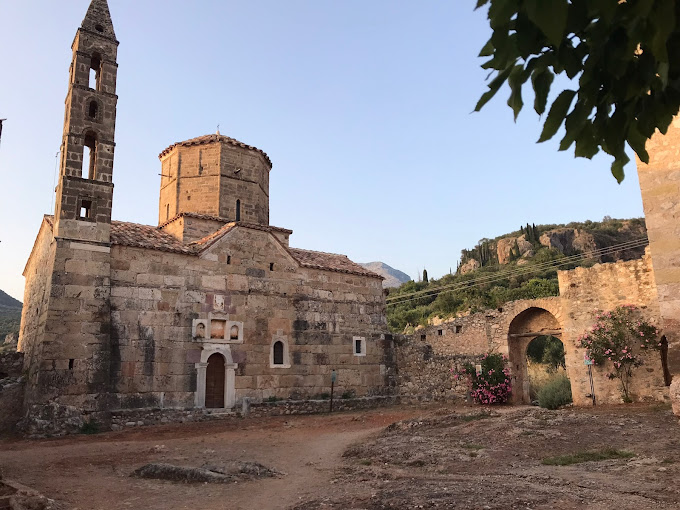
In Old Kardamili, the Tower of Mourtzinos dominates, which belonged to the last captain of Mani and is one of the Towers from which most of it has been saved. More specifically, the half-demolished arched gate, the Tower House, the Tower, the Blacksmith, the underground Cistern, the Olive Mill and the Vegetable Garden that covered the family’s needs are preserved. While at the entrance of the Mourtsinos Tower, the Church of Agios Spyridons dominates, which was also the family church of the Mourtsinos. The temple was actually the family church of the Troupakis and Mourtzinos. The bell of the church of Agios Spyridon in Kardamili is said to be a pirate’s booty. The north side of the church is identified with the wall of Pano Kardamyli and the outer enclosure of the Mourtzinon complex. The Tower of Mourtzinos, which today houses the Museum of Mourtzinos, is a typical fortified residence of a captain of Exo Mani. The construction of the first buildings in the Tower of Mourtsinos is placed at the end of the 17th century, when the progenitor of the Mourtsinos, Michael Paleologos, appears in the area. Telephones +30 2721073638 +30 2721063100 (EFA Messinia) Ticket Prices Whole: €3 Reduced: €2 Single Ticket: €15 – Duration 3 days, and valid for: Nestor’s Palace, Archaeological Museum of Messinia, Archaeological Museum of Chora, Kalamata Castle, Methoni Castle, Pylos Castle (Niokastro), Troupakidon – Mourtzinon Fortress Complex. Opening Hours Saturday, Sunday: 08:30 – 15:30 Monday – Friday: Upon consultation with the EFA of Messinia.
Church of Panagia Vlaherna
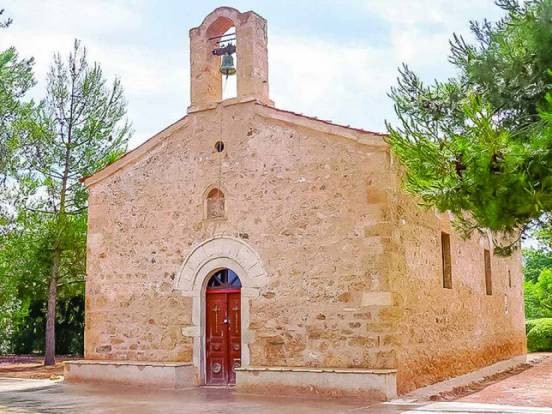
Very close to Filiatra, you will come across a very special church. It is about the church of Panagia Vlacherna, which is the fourth church to be built on the exact same spot! The specific church was built in 1820, however the first church existed there before 1204 when the Franks arrived in Filiatra, who turned it into a Catholic church. After the departure of the Franks, it was again converted into an Orthodox church or a new one was built (1500-1600). Opening Hours The visit to the Church can be done on all days of the week.
